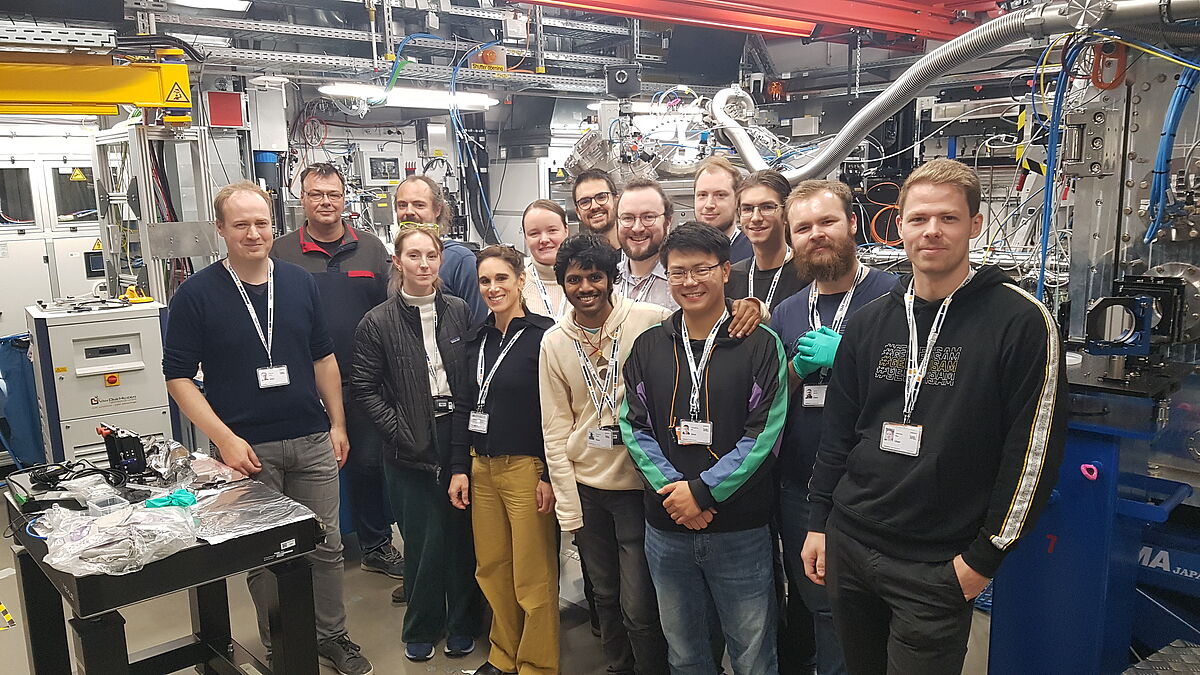In search of cosmic diamonds and a strange form of water: physicists at the University of Rostock experiment on Germany's largest research instrument - 07.11.2023

Physicists from the University of Rostock were the first scientists to carry out experiments at the European XFEL, the world's largest X-ray laser research facility, to investigate the interior of large planets using powerful pulsed lasers. Such investigations have only been possible in this superlative research facility since 2023. The facility is located almost 40 meters underground in a 3.4-kilometre-long tunnel on the border of Hamburg and Schleswig-Holstein and is currently Germany's largest research instrument.
Researchers at the Institute of Physics at the University of Rostock have been supporting and designing the plans for these experiments for several years. The aim of the investigations is to gain a better understanding of the universe and perhaps even develop new technological applications. Specifically, it is about the interior of the large planets Jupiter, Saturn, Uranus and Neptune. This is where enormous pressure and high temperatures prevail. This environment changes the properties of matter as we know it: In Jupiter and Saturn, hydrogen becomes a liquid metal and in the interior of Uranus and Neptune it could rain diamonds, whereby a strange form of water can also form. This so-called superionic water is characterized by the fact that oxygen forms a solid crystal lattice, while the hydrogen nuclei are almost freely movable as protons. This highly conductive form of water does not occur on Earth, but could be the most common form of water in our solar system.
Recreating such conditions in the laboratory and measuring the special properties of this unusual type of matter is what the physicists in Rostock are pursuing with their work. On Earth, however, such experiments usually only work for fractions of a second and with the help of very powerful lasers. The precise investigation of these short-lived states of matter is even more difficult. This requires extremely intense X-ray light, which can currently only be generated by huge particle accelerators, so-called X-ray free-electron lasers. These investigations were now possible for the first time at the European XFEL: initially as part of a premiere experiment in May of this year with the participation of leading research institutions worldwide to demonstrate the extraordinary capabilities of the facility. At the end of October, the scientists from Rostock were then able to advance their research into the interior of the large planets together with partners from the French elite university Ecole Polytechnique.
"It can already be said that our experiments have brought us a lot closer to understanding the diamond rain inside Uranus or Neptune and also the superionic form of water," reports Prof. Dr. Dominik Kraus, head of the High Energy Density Physics working group at the University of Rostock and initiator of the experiments. "Overall, it was a great experience in which many physics students from the university were able to participate and gain unique experience at an international large-scale research facility. We are now analyzing all the data obtained in order to quickly publish what we have learned and carry out even more precise experiments in the future."
In addition to providing an insight into the interior of planets, the experiments conducted by the Rostock researchers also improve our understanding of the production of materials under extreme conditions. In this way, special forms of diamonds could be produced efficiently, which could, for example, be used as catalysts with the help of sunlight to help recycle the greenhouse gas CO2. Under even more extreme conditions, completely new materials could also be created: for example, a form of carbon that has so far only been predicted to be as hard as diamond but significantly less brittle. Like diamond, this form of carbon should also be stable under normal conditions. However, as the required pressures are not reached in the earth's interior, this material has so far remained hidden from us.
"The combination of basic research, in this case astrophysics and planetary physics, with possible applications fascinates me immensely," enthuses Kraus. "There are many examples from the past where basic research for a better understanding of the universe has ultimately led to new technical possibilities for our daily lives. The current experimental possibilities open up a whole new window to extremely high pressures and temperatures in the laboratory. We are only at the very beginning with this fantastic facility and we in Rostock are currently at the forefront.
